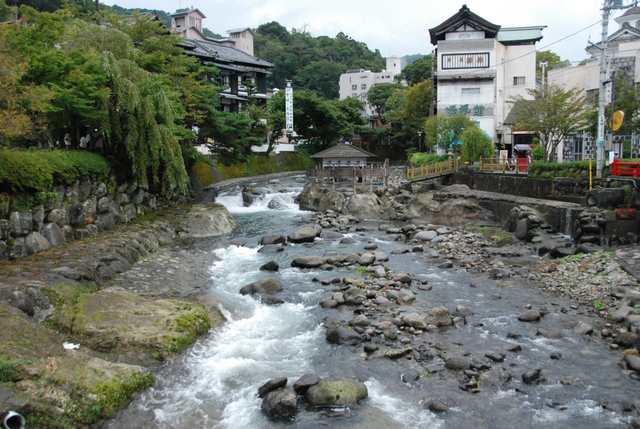Izu, Shizuoka on:
[Wikipedia]
[Google]
[Amazon]


 is a
is a
Izu climate data
/ref>
 Izuhakone Railway –
Izuhakone Railway –

Izushi Tourist Association
*


 is a
is a city
A city is a human settlement of notable size.Goodall, B. (1987) ''The Penguin Dictionary of Human Geography''. London: Penguin.Kuper, A. and Kuper, J., eds (1996) ''The Social Science Encyclopedia''. 2nd edition. London: Routledge. It can be def ...
located in central Izu Peninsula in Shizuoka Prefecture, Japan
Japan ( ja, 日本, or , and formally , ''Nihonkoku'') is an island country in East Asia. It is situated in the northwest Pacific Ocean, and is bordered on the west by the Sea of Japan, while extending from the Sea of Okhotsk in the north ...
. , the city had an estimated population
Population typically refers to the number of people in a single area, whether it be a city or town, region, country, continent, or the world. Governments typically quantify the size of the resident population within their jurisdiction using a ...
of 30,678 in 13,390 households, and a population density
Population density (in agriculture: standing stock or plant density) is a measurement of population per unit land area. It is mostly applied to humans, but sometimes to other living organisms too. It is a key geographical term.Matt RosenberPopul ...
of 84 persons per km2. The total area of the city was .
Geography
Izu is located in the north-central portion of the Izu Peninsula, and includes most of the Amagi Mountains. The region is hilly and some 80% of the city area is covered by forest. TheKano River
The is an A class river in Shizuoka Prefecture of central Japan. It is long and has a watershed of .
The Kano River originates from Mount Amagi in central Izu Peninsula and follows a generally northern path into Suruga Bay at Numazu
is ...
runs through the city, which has a short coastline to the west on Suruga Bay of the Pacific Ocean
The Pacific Ocean is the largest and deepest of Earth's five oceanic divisions. It extends from the Arctic Ocean in the north to the Southern Ocean (or, depending on definition, to Antarctica) in the south, and is bounded by the continen ...
. The area is part of the Izu-Tobu volcanic region, and is therefore subject to frequent earthquakes, and the city also has numerous hot spring
A hot spring, hydrothermal spring, or geothermal spring is a spring produced by the emergence of geothermally heated groundwater onto the surface of the Earth. The groundwater is heated either by shallow bodies of magma (molten rock) or by c ...
s as a result. Warmed by the Kuroshio Current
The , also known as the Black or or the is a north-flowing, warm ocean current on the west side of the North Pacific Ocean basin. It was named for the deep blue appearance of its waters. Similar to the Gulf Stream in the North Atlantic, the Ku ...
, the area enjoys a warm maritime climate with hot, humid summers and mild, cool winters.
Surrounding municipalities
*Shizuoka Prefecture **Numazu
is a city located in eastern Shizuoka Prefecture, Japan. , the city had an estimated population of 189,486 in 91,986 households, and a population density of 1,014 persons per km2. The total area of the city is .
Geography
Numazu is at the nor ...
**Izunokuni
270px, Izunokuni City Hall
is a city located in Shizuoka Prefecture, Japan. , the city had an estimated population of 48,579 in 21,257 households and a population density of 506 persons per km2. The total area of the city is .
Geography
Izuno ...
** Itō
** Higashiizu
** Kawazu
** Nishiizu
Demographics
Per Japanese census data, the population of Izu has been in decline over the past 60 years.Climate
The city has a climate characterized by characterized by hot and humid summers, and relatively mild winters (Köppen climate classification
The Köppen climate classification is one of the most widely used climate classification systems. It was first published by German-Russian climatologist Wladimir Köppen (1846–1940) in 1884, with several later modifications by Köppen, notabl ...
''Cfa''). The average annual temperature in Izu is 15.9 °C. The average annual rainfall is 2035 mm with September as the wettest month. The temperatures are highest on average in August, at around 26.5 °C, and lowest in January, at around 6.3 °C./ref>
History
During theEdo period
The or is the period between 1603 and 1867 in the history of Japan, when Japan was under the rule of the Tokugawa shogunate and the country's 300 regional '' daimyo''. Emerging from the chaos of the Sengoku period, the Edo period was characte ...
, most of Izu Province
was a province of Japan in the area of Shizuoka Prefecture. Nussbaum, Louis-Frédéric. (2005). "''Izu''" in . Izu bordered on Sagami and Suruga Provinces. Its abbreviated form name was .
The mainland portion of Izu Province, comprising th ...
was ''tenryō
The Tokugawa shogunate (, Japanese 徳川幕府 ''Tokugawa bakufu''), also known as the , was the military government of Japan during the Edo period from 1603 to 1868. Nussbaum, Louis-Frédéric. (2005)"''Tokugawa-jidai''"in ''Japan Encyclopedia' ...
'' territory under direct control of the Tokugawa shogunate
The Tokugawa shogunate (, Japanese 徳川幕府 ''Tokugawa bakufu''), also known as the , was the military government of Japan during the Edo period from 1603 to 1868. Nussbaum, Louis-Frédéric. (2005)"''Tokugawa-jidai''"in ''Japan Encyclopedia ...
, although portions near modern Shuzenji were under the control of the Ōkubo clan
The were a ''samurai'' kin group which rose to prominence in the Sengoku period and the Edo periods.Meyer, Eva-Maria"Gouverneure von Kyôto in der Edo-Zeit."Universität Tübingen (in German) Under the Tokugawa shogunate, the Ōkubo, as heredita ...
of Ogino-Yamanaka Domain. During the establishment of the modern municipalities system in the early Meiji period
The is an era of Japanese history that extended from October 23, 1868 to July 30, 1912.
The Meiji era was the first half of the Empire of Japan, when the Japanese people moved from being an isolated feudal society at risk of colonization ...
in 1889, the area was reorganized into several villages under Kimisawa District, Shizuoka Prefecture. Kimisawa District merged with Tagata District in 1896.
Shuzenji became a town in 1924, followed by Toi in 1938, Nakaizu in 1958, and Amagiyugashima in 1960. The city of Izu was established on April 1, 2004, by the merger of the towns of Shuzenji, Toi, Nakaizu and Amagiyugashima (all from Tagata District).
Government
Izu has a mayor-council form of government with a directly elected mayor and aunicameral
Unicameralism (from ''uni''- "one" + Latin ''camera'' "chamber") is a type of legislature, which consists of one house or assembly, that legislates and votes as one.
Unicameral legislatures exist when there is no widely perceived need for multic ...
city legislature of 16 members.
Economy
The economy of the city of Izu is centered on tourism (primarily hot spring resorts), farming/forestry andcommercial fishing
Commercial fishing is the activity of catching fish and other seafood for commercial profit, mostly from wild fisheries. It provides a large quantity of food to many countries around the world, but those who practice it as an industry must often ...
. Izu is noted for its production of ''wasabi
Wasabi ( Japanese: , , or , ; ''Eutrema japonicum'' or ''Wasabia japonica'') or Japanese horseradish is a plant of the family Brassicaceae, which also includes horseradish and mustard in other genera. The plant is native to Japan and the Russi ...
'' and ''shiitake
The shiitake (alternate form shitake) (; ''Lentinula edodes'') is an edible mushroom native to East Asia, which is now cultivated and consumed around the globe. It is considered a Medicinal fungi, medicinal mushroom in some forms of tradition ...
''. During the Edo period, the area was also known for its production of gold and other ores; however, the last commercial mining operations were closed in the 1960s.
Education
Izu has seven public elementary schools, four public middle schools and one combined elementary/middle school operated by the city government. The city has two public high schools operated by the Shizuoka Prefectural Board of Education.Transportation
Railway
*Sunzu Line
The is a commuter railway line of the Izuhakone Railway, a private railroad in Japan. The line connects Mishima Station in the city of Mishima with Shuzenji Station in the city of Izu, both within Shizuoka Prefecture. The name "Sunzu" comes ...
**–
Highway
*
Izu-Jūkan Expressway
The is an incomplete two-lane national expressway in Shizuoka Prefecture. It is owned and operated primarily by the Ministry of Land, Infrastructure, Transport and Tourism (MLIT), but has a short section maintained and tolled by the Central N ...
*
*
Local attractions
*Shuzenji Romney Railway
The Shuzenji Romney Railway (ロムニー鉄道, ''Romney Railway'') is a 1.2 km, gauge ridable miniature railway located in Niji-no-Sato (Rainbow Park) in Izu, Shizuoka, on the Izu Peninsula in Japan. It is based on the English Romney, Hyt ...
*Toi gold mine
The was an important gold mine during the Edo period in Japan, located within what is now part of the city of Izu, Shizuoka Prefecture in the middle of the Izu Peninsula. It remained in operation to the mid-twentieth century.
History
Small-sca ...
* Jōren Falls
*Kamishiroiwa ruins
The is an archaeological site containing the ruins of a late-middle to early-late Jōmon period settlement located in the Kamishiraiwa neighborhood of the city of Izu, Shizuoka in the Tōkai region of Japan. The site was designated a National ...
, Jomon period settlement trace, National Historic Site
Sister city relations
* – Nelson, British Columbia,Canada
Canada is a country in North America. Its ten provinces and three territories extend from the Atlantic Ocean to the Pacific Ocean and northward into the Arctic Ocean, covering over , making it the world's second-largest country by tot ...
, from August 18, 2005
* – Hope, British Columbia
Hope is a district municipality at the confluence of the Fraser and Coquihalla rivers in the province of British Columbia, Canada. Hope is at the eastern end of both the Fraser Valley and the Lower Mainland region, and is at the southern end ...
, Canada
Canada is a country in North America. Its ten provinces and three territories extend from the Atlantic Ocean to the Pacific Ocean and northward into the Arctic Ocean, covering over , making it the world's second-largest country by tot ...
, from August 18, 2005
* – Minamiminowa, Nagano
is a village located in Nagano Prefecture, Japan. , the village had an estimated population of 15,463 in 6115 households, and a population density of 371 persons per km². The total area of the village is .
Geography
Minamiminowa is located in ...
, Japan, from February 25, 1991
Notable people from Izu
*Naoko Ken
(born July 7, 1953) is a Japanese singer and actress. She is well known for her comedy roles featuring idiosyncratic looks, and a string of successful torch songs that gained popularity in the late 1970s and early 1980s.
Biography
In 1971, ...
– singer, actress
* Yurika Hase (Yurika Ochiai) – voice actress
*Sōsuke Kaise
is a Japanese manga artist, who is best known for the manga '' Grenadier''. He also created a number of one shot manga prior to that, also published in Kadokawa magazines. ''Grenadier'' started with two one-offs in November 2000 and Februar ...
– manga artist
*Hon'inbō Shūwa
Hon'inbō Shūwa (本因坊秀和, 1820–1873) was a Japanese professional Go (game), Go player, and also the fourteenth head of the Hon'inbō house from 1847 to 1873.
Career
Shūwa's most significant games were probably the three challenge gam ...
– professional go player
External links
*Izushi Tourist Association
*
References
{{Authority control Cities in Shizuoka Prefecture Populated coastal places in Japan